The Digital Model Factory: Improvement Sub-systems Training Aligned to the Shingo Model
By Damla Akgül and Doğan Hasan, UnoPro Academy, Shingo Licensed Affiliate
ABSTRACT
The aim of this study is to research and evaluate the alignment and contribution of experiential Lean and digital transformation workshops in the Digital Model Factory in a virtual reality environment to the Continuous Improvement dimension of the Shingo Model and improvement sub-systems, as taught in the SYSTEMS DESIGN workshop. The COVID-19 pandemic has shown how important it is to have virtual capabilities and utilize digital opportunities. Before the pandemic, Industry 4.0 brought many innovations such as on-the-job trainings in virtual reality and digital twin technology. These technologies made it easier for companies to gain new skills through on-the-job trainings and to observe and analyze physical manufacturing facilities in real time to decide and improve current systems. In this study, we will research and evaluate the effectiveness of Lean and digital transformation workshops in a virtual reality plant, called the Digital Model Factory.
From the beginning of the pandemic, many training and consulting companies struggled to deliver services to their clients. In most cases, training and consulting activities were stopped by the clients themselves due to health risks. It was not possible to travel or visit clients at all.
Since 2018, UnoPro Academy has established and developed model factories in Turkey. When the pandemic began, the traditional teaching methods almost ceased to exist. We discovered virtual meetings and workshops were the only way to serve our clients. We also concluded that the education/training system, which has been almost the same for thousands of years and mostly theoretical based in the classroom, would move toward virtual reality and experiential learning. The reason is that it is based on scientific fact. According to studies, theoretical learning is not a real learning at all. It causes a chemical reaction in the brain and when the reaction is over, the learning is forgotten. But with experiential learning, which means learning by doing, reflecting the learning to behaviors builds physical connections in the brain and the learning becomes permanent.
Based on this fact, we have seen that scientific learning by doing will replace theoretical learning and this trend will increase as it will be accomplished by using virtual reality technologies.
After incorporating virtual reality technologies and digital twin technologies and having this know-how, we decided to create a virtual reality model factory by using our model factory experience.
With the roadmap created in the form of training modules, a person who has no Lean and digital transformation skills gains competence by observing, analyzing, and implementing in this virtual reality model factory. So, it becomes possible to practice the learnings on one’s own, and with repetitions of this roadmap (PDCA cycle), the skills increase toward becoming an expert.
What Is a Model Factory?
A model factory is a training center that provides practical services and ensures the dissemination of operational excellence principles by using experiential learning techniques. It aims to increase the knowledge and skills of professionals on Lean and digital transformation. In this manner, a model factory is a learning factory to become a model for other factories. The aim of this factory is not to sell products but to deliver experiential Lean and digital transformation workshops. The business model is based on these workshops, and SMEs of any industry are the target group as clients. A model factory is a factory with a real product, real machines, real processes, and workshops designed with real problems.
A model factory has three phases. The first phase is the traditional phase. In this phase, the value chain consists of processes and workflows with wastes and there are many areas for improvement. A participant of a workshop can observe, analyze, and improve these areas. The second phase is the Lean phase. In this phase, wastes are eliminated, and a Lean value stream is realized. In the third phase, a Lean and digital phase is achieved by implementing Industry 4.0 technologies. Thus, a workshop participant experiences how to reach the Lean digital phase in the form of a road map while progressing on the modules.
What Is a Digital Model Factory?
A Digital Model Factory is simply a virtual reality model factory. Participants can access all the facilities of the model factory instantly by simply wearing virtual reality glasses or by connecting remotely with their device. A Digital Model Factory is again based on a real product with related machines, processes, and problems, but this time there is no physical factory. The Digital Model Factory is based on real data and facts obtained while physically manufacturing the product. Participants can observe the real processes and complete value stream necessary to produce the selected product in a virtual reality environment, as in a physical model factory. Beyond observing, it provides an environment where objects and machines can be interacted with, which is not always possible in a physical model factory. So, the Lean and digital transformation roadmap, which has many similarities and a huge alignment with the Continuous Improvement dimension of the Shingo Model, can be experienced by the participants. A Digital Model Factory is a virtual reality model factory designed to achieve the same learning outcomes and results of a physical model factory. Since the practices in a model factory are not theatrical and are virtually real, the learning and the experience and thus the skill increase is also real. The efficiency of the Digital Model Factory is based on gembas (Go & Observes), just like in the Shingo workshop series. For this reason, experiential trainings are provided with real scenarios created with manufacturing processes made with virtual twins of the machines required to produce the real product of the Digital Model Factory. A participant of the workshop acquires permanent learning with experiential learning and reaches the competence to immediately apply these learnings in his or her own business.
The Modules of the Digital Model Factory
The 17 training modules in this roadmap include hands-on training on the improvement sub-systems of the Continuous Improvement dimension in the Shingo Model. Experiential learning takes place because it is in a virtual environment. Let’s look at these 17 modules and clarify how they can increase the competencies of companies in establishing and applying improvement sub-systems.
1. Lean Approach and Industry 4.0
In the first module of this training, the main purpose is supporting constancy of purpose within the organization and aligning the team toward continuous improvement. In this module, necessary information is given to align company employees around the Lean philosophy and Industry 4.0, which should be implemented as a continuation of the Lean philosophy. When Industry 4.0 is applied on non-simplified systems, that is, when digital technologies are applied on systems that are not designed to produce a certain output and contain waste, this creates another inefficiency. Thus, both the invested capital is used inefficiently, and the digital investment is not sufficiently utilized. Digital manufacturing systems are manufacturing sub-systems that must be integrated into manufacturing systems. Another handicap is digital technologies require personnel with higher competency, but if measures are not taken to increase the personnel competence of the enterprise in this way, the enterprise has serious problems in this direction as well. Digital systems create needs such as more competent maintenance personnel, automation personnel, and more competent operators.
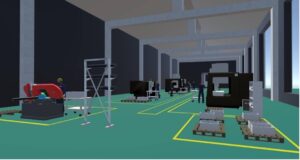
2. Standardization
The main purposes of this module are to standardize the processes and make it a standard work. In this module, both the process approach and standardization are the main scope. The reason for starting with the process approach is to stabilize the processes. This module is designed on the creation of the right workflows for better functioning systems. In this module, the first step is to determine how to create the right workflows and how to associate these workflows with competencies, then understand where people should start and stop, what outputs people should produce, what inputs they should use to produce these outputs, what reports should be created, and what feedback should be given. If these workflows are correctly prepared, they support the systems to be installed correctly and increase the effectiveness of productive and non-productive personnel. Stabilized workflows can then be standardized. Thus, a standard operating procedure or a similar document can be created for each process in the workflow, and the steps in each process can be standardized and used as a training document. If the workflows refer to these standard operating procedures, a chain of interrelated documents is obtained. Thus, it is no longer necessary to give details in job descriptions regarding the competence and responsibilities of individuals. Instead, they can detail which workflows should be mastered and which SOPs are within the scope of the job description. Thus, even if standards or workflows change, there is no need to change the job description, so solid workflows and standard operations become very important as the basis of all improvements.
To gain this competence, real workflows in the Digital Model Factory are observed and these workflows are created by participants in the Zoom environment.
The standard operating procedures for the processes are then prepared by the participants in Zoom after observing them virtually. Thus, experiential learning based on a real workflow and processes takes place. After that, the results of the workshop, new workflows, and SOPs are observed by the participants in the Digital Model Factory.
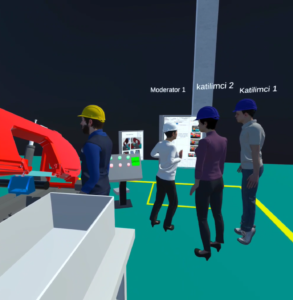
3. Value Stream Mapping (VSM-Analysis and Design)
The main purposes of this module are to implement Go and Observe, focusing on value stream by relying on data and facts. In this module, as we do with a value stream map in a real factory, we can identify the stocks waiting at the stations, determine the value-added and non-value-added steps in detail by making the work study of the operations at the stations, and thus, it is possible to design the future state after drawing the current state value stream map. In the Digital Model Factory in a virtual reality environment, you can gain the skills to draw a value stream map by observing and analyzing data by practicing the same steps you would follow in a physical factory.
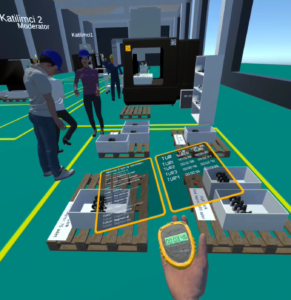
4. Value Stream Mapping 4.0 (VSM 4.0 - Analysis and Design)
This new technique is a value stream map created entirely for the flow of data and information suitable for Industry 4.0. Thus, it is possible to reach and identify information such as how and where the data is collected, how the information is formed, how it flows, and to design the future state by using Industry 4.0 technology in the same way. By analyzing the current situation of the Digital Model Factory in the traditional phase and implementing Industry 4.0 technologies, the Lean digital phase can be achieved and observed, thus demonstrating to participants best-use cases for their future states. The participants gain the skills to analyze and design value stream maps for their own Industry 4.0 roadmap.
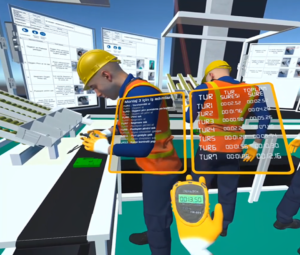
5. Total Productive Maintenance (TPM) – OEE
In this module, maintenance operations of current state are observed and analyzed, and the maintenance system required for the scope of autonomous maintenance is studied. Thus, the participant can attain the competency to apply it in his or her own facility, together with how to set up the total productive maintenance system. Calculations of MTTR (Mean Time to Retrieve), MTBF (Mean Time Between Failure), MTTF (Mean Time to Failure) rates, the availability rate, quality rate, and performance rate parameters, which are the components of OEE, are studied in this module.

6. SMED (Single-Minute Exchange of Dies)
In this module, an existing setup process is observed, then the setup process is improved using SMED techniques. As a result, an improved setup process can be achieved. Since participants observe the process of a real setup, and all they see is based on the facts they observe, the participants can attain the necessary skills to implement this in their own businesses.

7. FMEA (Failure Mode Effects Analysis)
The main purposes of this module are to identify and eliminate waste of operation and to manage risk. In this module, participants analyze risks by observing real processes and planning measures against these risks. Thus, since it is a study conducted on real risks, the participants attain the competence to apply them in the processes of their own enterprises.
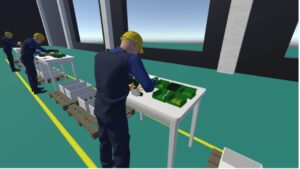
8. Gemba, Kaizen, Jidoka, Poka-Yoke
The main purposes of this module are implementing Go and Observe activities, problem solving, and mistake proofing. In terms of kaizen activity, in this module, the participants improve the process by using two different problem-solving techniques based on a real manufacturing problem. In one of the two applications, 8D technique is used. In the other application, A3 technique is used. One of them is produced as a poka-yoke solution. Thus, the participants in the training apply two different problem-solving techniques to real production problems and create a poka-yoke solution to one of them.

9. Workstation Design, Ergonomics, 5S
Participants organize an existing workstation in a virtual environment in accordance with the 5S criteria and learn how the station should be designed to optimize material movements. Thus, the participants can learn the arrangement of the workstation in accordance with the same workstation design approach and 5S criteria in a physical model factory setup and can carry this competence directly to their own businesses.
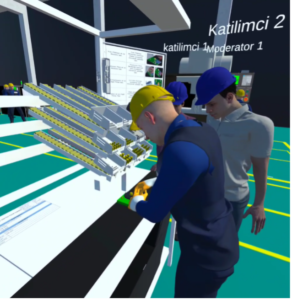
10. Yamazumi (Line Balancing)
The main purposes of this module are to improve flow in processes. In the line balancing module, the participants can reach a cell structure by studying and analyzing existing workstations, using line balancing techniques, and then observe this improved state directly in the virtual environment. As a result, participants will see the results they have obtained beyond just balancing the existing stations. After observing this, participants can apply the results on the balanced line themselves. While it is possible to see the results after doing these studies, investing, and applying in a normal business, it is possible to see the results in the virtual environment without investing.
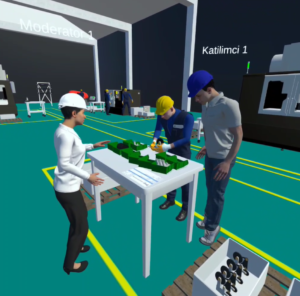

11. Kanban, Milk-Run, Heijunka
In this module, the current push system is analyzed and converted into a pull system. Thus, participants can directly see how a push system should be converted into a pull system, how Kanban calculations should be made, how the Milk-run system should work, and they can attain an efficiency at it so they can do the same work in their own business.
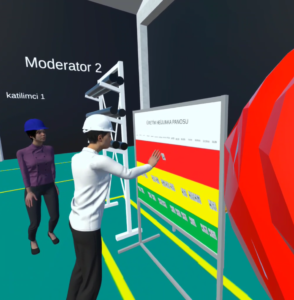
12. ERP Supported Production Planning (ERP – MRP II, CRP)
Enterprise resource planning systems cannot be used effectively in most enterprises. In many enterprises they are used as accounting software, and in a few the production system is carried out entirely through this software. Very rarely, we can see that capacity resource planning and KPI tracking are done through this software. This module demonstrates how the process from customer order entry to shipment should be accomplished through a real enterprise resource planning system. Thus, participants can see and learn what they should expect from their own systems and how they should be organized.
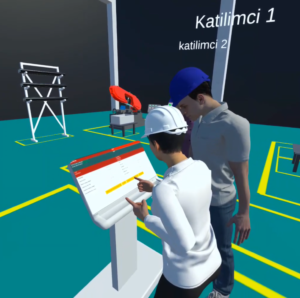
13. Strategic Performance Management
In this module, KPI boards are evaluated as a part of visual management and a new KPI board is designed based on the information provided. It shows how strategic performance management should be done by using digital technologies with a Lean digital surplus. Thus, participants can revise and implement their own visual performance management system according to their experiences.
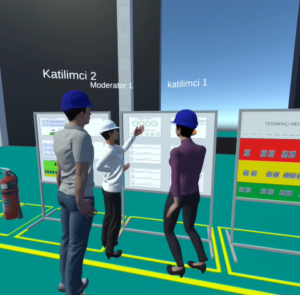
14. Competency Management
The main purposes of this module are providing engagement and involvement of employees to work and integrate improvement with work. In the competency management module, studies are carried out on how human resources should manage competencies, how they will be determined, and how they will be developed. By applying simple tools, participants can set up the competency management system in their own businesses.
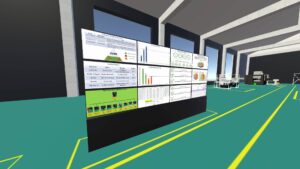
15. Lean Leadership
In the Lean leadership module, the traditional leader and today’s leadership expectations are compared and explained. The module discusses how the leadership approach should be on the axis of the Shingo Model as summarized in the Shingo Guiding Principles. In this way, it is aimed to increase participant interest in Shingo workshops.
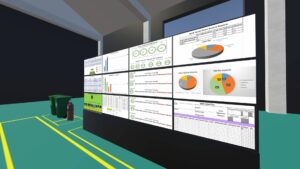
16. Influencing Techniques and Performance Interviewing
The main purposes of this module are implementing the performance feedback system and maintaining its continuity. In this module, in accordance with the feedback rules, an application is made on how to give feedback on an employee’s performance. Since it may not always be easy to give feedback on performance in the manager-employee relationship, this practice allows managers to give correct feedback to their employees and to evaluate their employees as they receive this feedback.

17. Process Audit
In this module, the work done in all 17 modules is audited and evaluated, progress is determined according to the initial situation, and actions are determined for the next cycle. As a result, the designed Digital Model Factory roadmap is a big PDCA cycle. Therefore, after modules are applied, a process audit should be done, progress should be determined, and actions should be determined for the next cycle. An assessment score is obtained at the end of the audit. Thanks to the audit carried out in the DMF with the Process Audit module, the participants reach the competence to carry out this audit in their own businesses.
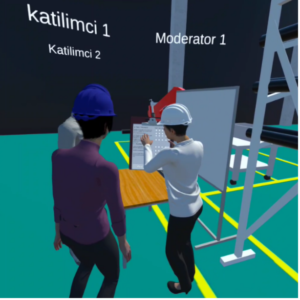
Gains to Support the Shingo Model
Following is a breakdown of benefits to an individual or organization when Digital Model Factory modules are delivered.